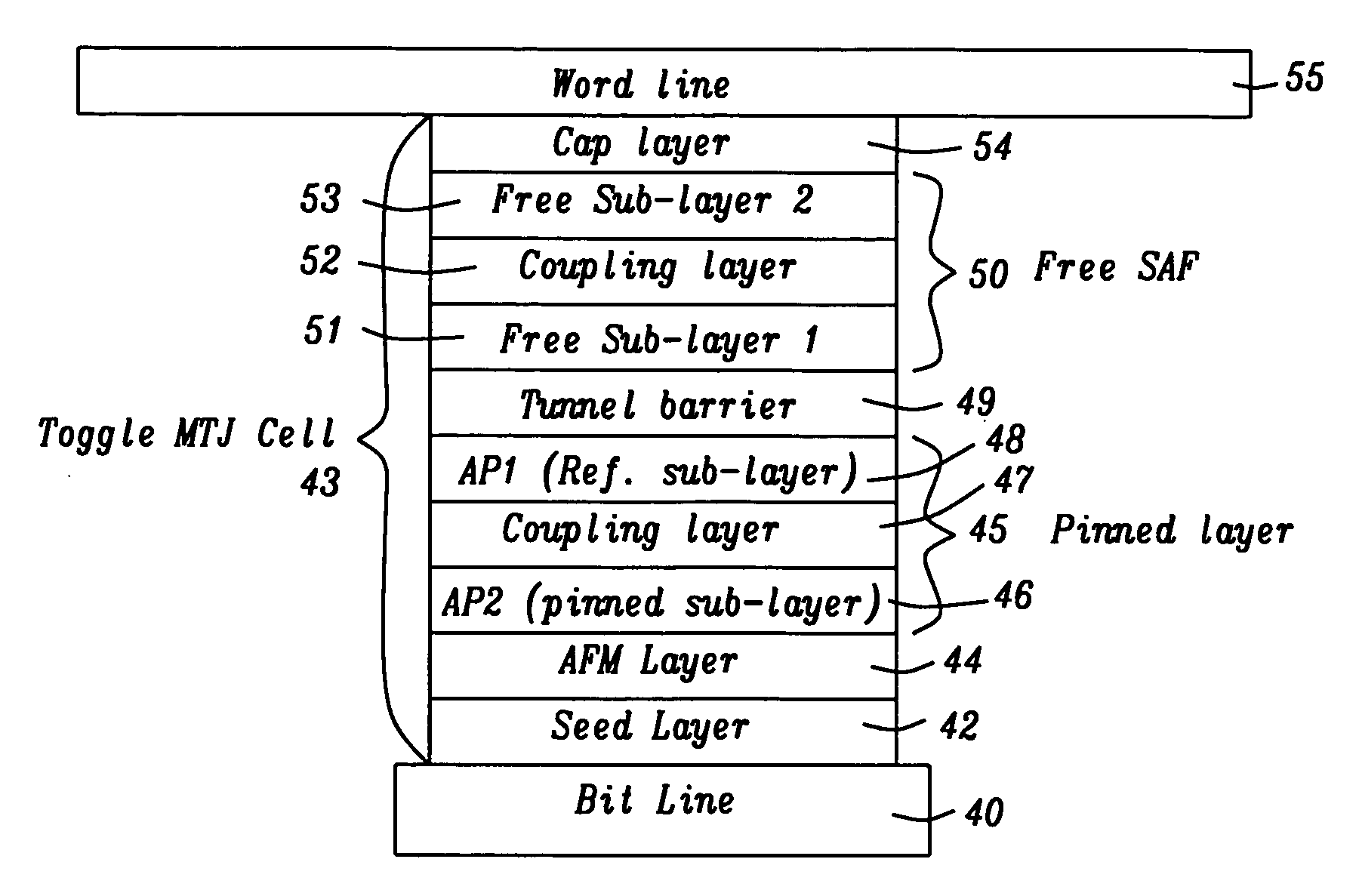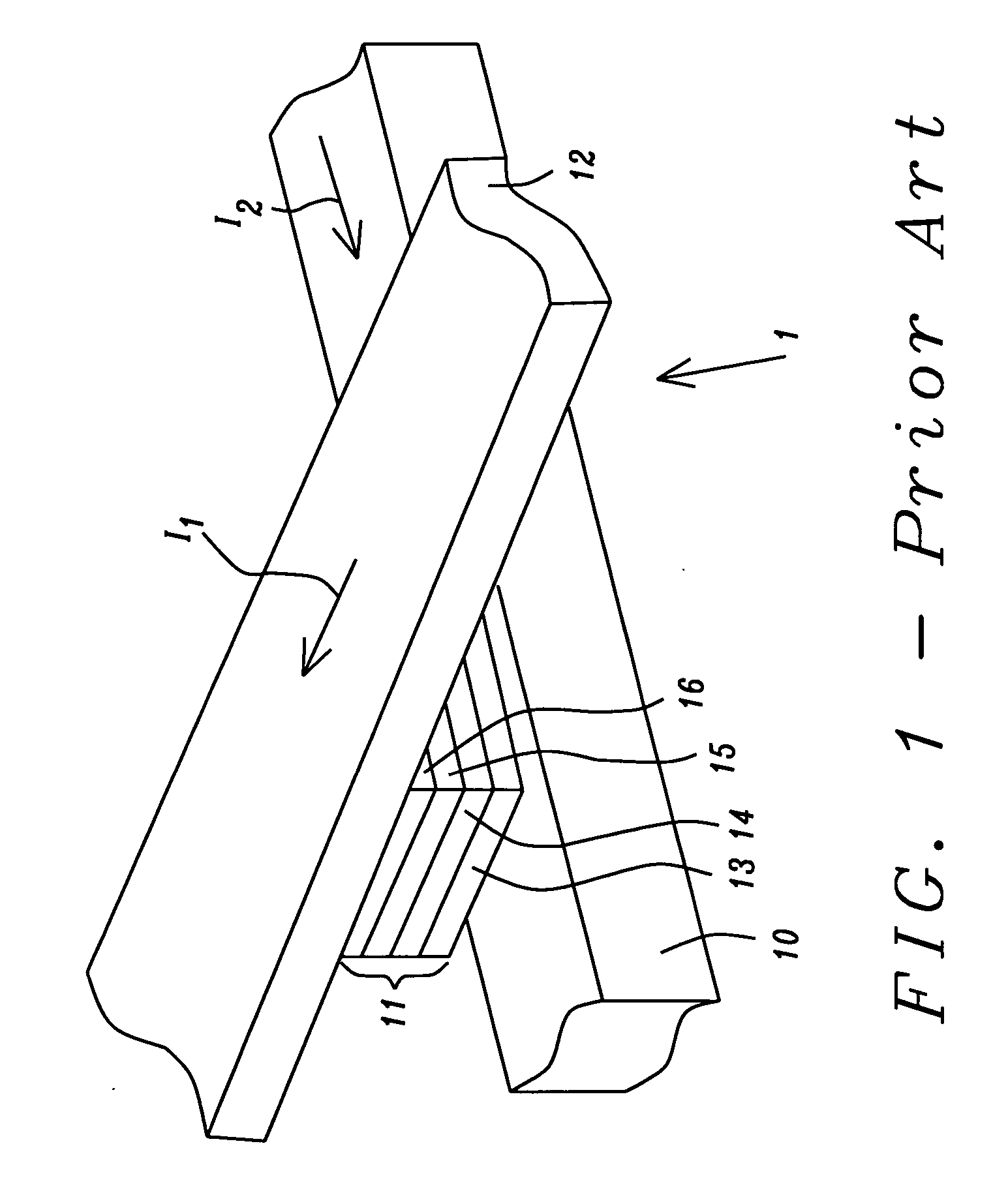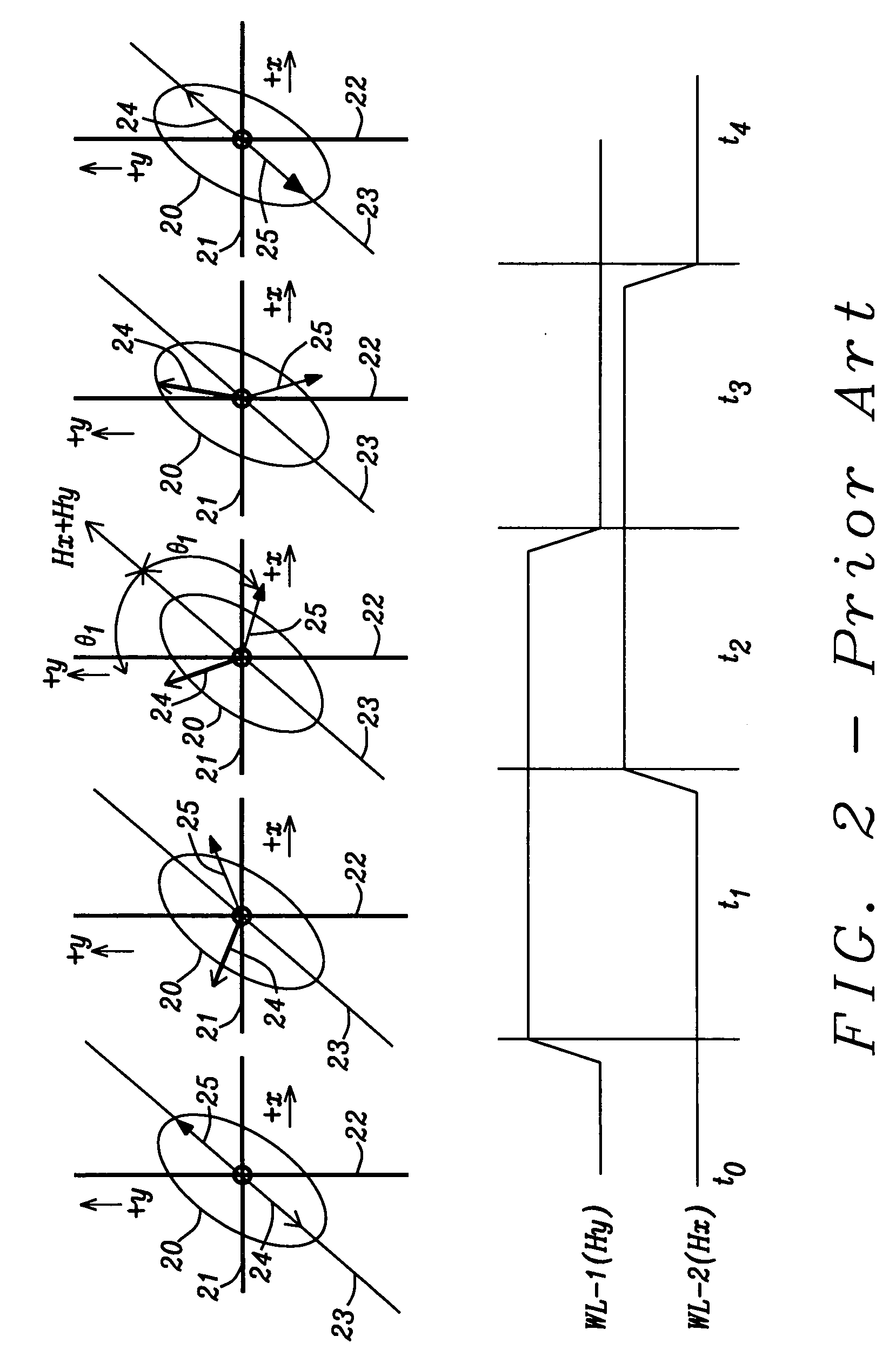Synthetic anti-ferromagnetic structure with non-magnetic spacer for MRAM applications
a non-magnetic spacer and anti-ferromagnetic technology, applied in the field of mram structure, can solve the problems of “half-selected” cells being more susceptible to unintentional switching of magnetic states, and manufacturability problems
- Summary
- Abstract
- Description
- Claims
- Application Information
AI Technical Summary
Benefits of technology
Problems solved by technology
Method used
Image
Examples
Embodiment Construction
[0032] The present invention is an MRAM structure with a toggle MTJ cell design wherein a SAF free layer has a nearly balanced anti-ferromagnetic (SAF) structure comprised of a first major sub-layer and a second major sub-layer with an anti-ferromagnetic layer therebetween. Within a major sub-layer, there is a plurality of minor magnetic sub-layers with a non-magnetic, parallel coupling layer between adjacent minor sub-layers. The drawings are provided by way of example and are not intended to limit the scope of the invention. Although certain drawings depict a bit line formed below a MTJ and a word line above the MTJ, the designation for bit line and word line may be reversed. Moreover, the terms bit line and word line may be interchanged with other terms such as column line, row line, data line, and digit line and that the MTJ may be a top MTJ, a bottom MTJ, or a dual MTJ as appreciated by those skilled in the art “Write word line” and “write bit line” are terms that identify the ...
PUM
 Login to View More
Login to View More Abstract
Description
Claims
Application Information
 Login to View More
Login to View More - R&D
- Intellectual Property
- Life Sciences
- Materials
- Tech Scout
- Unparalleled Data Quality
- Higher Quality Content
- 60% Fewer Hallucinations
Browse by: Latest US Patents, China's latest patents, Technical Efficacy Thesaurus, Application Domain, Technology Topic, Popular Technical Reports.
© 2025 PatSnap. All rights reserved.Legal|Privacy policy|Modern Slavery Act Transparency Statement|Sitemap|About US| Contact US: help@patsnap.com



